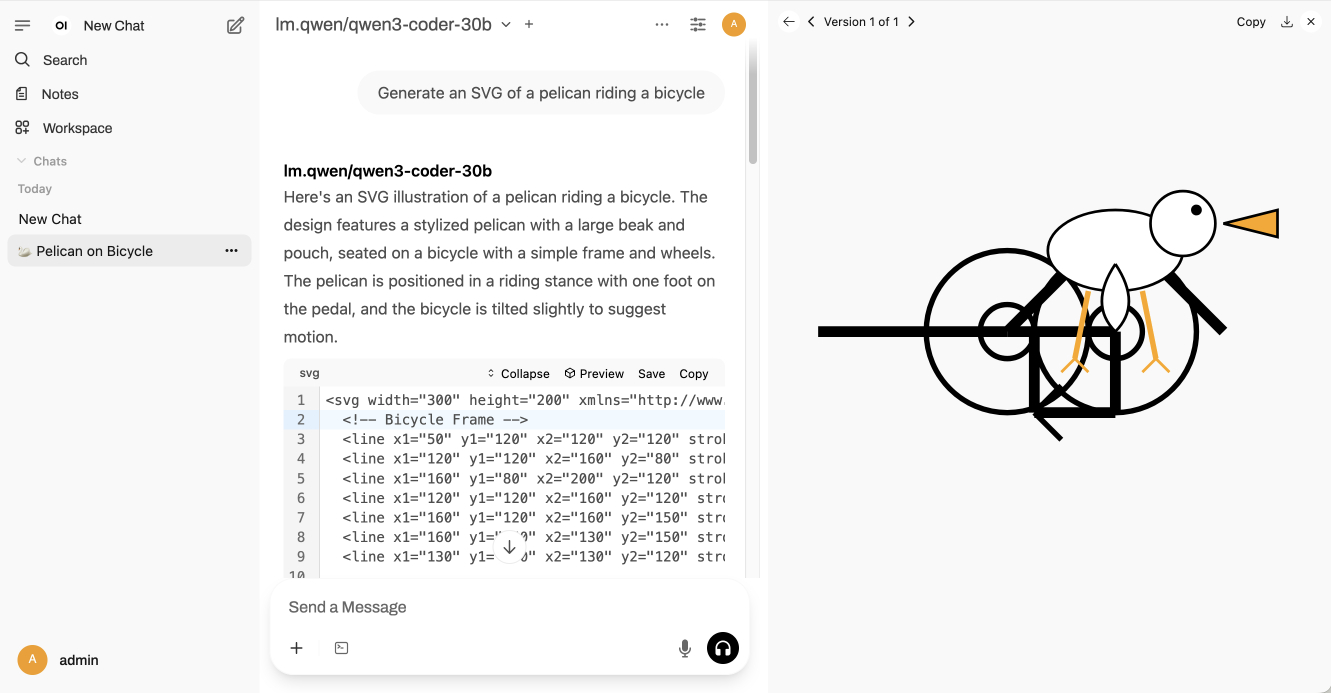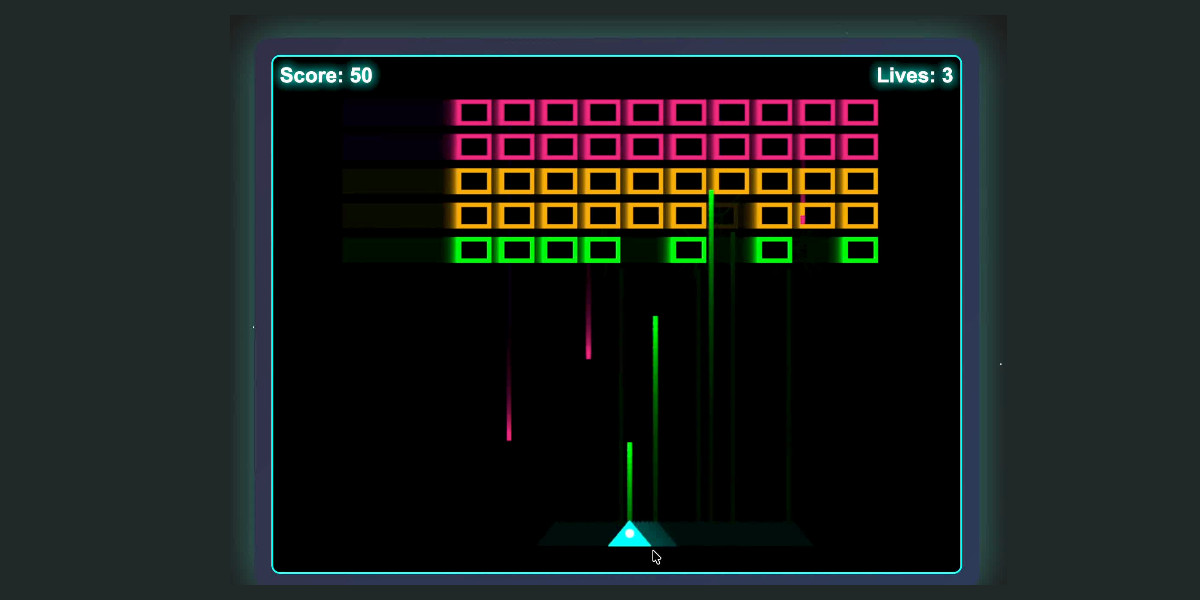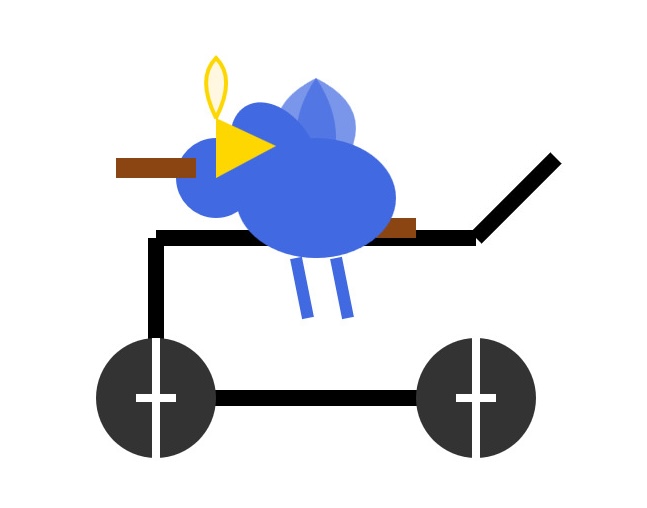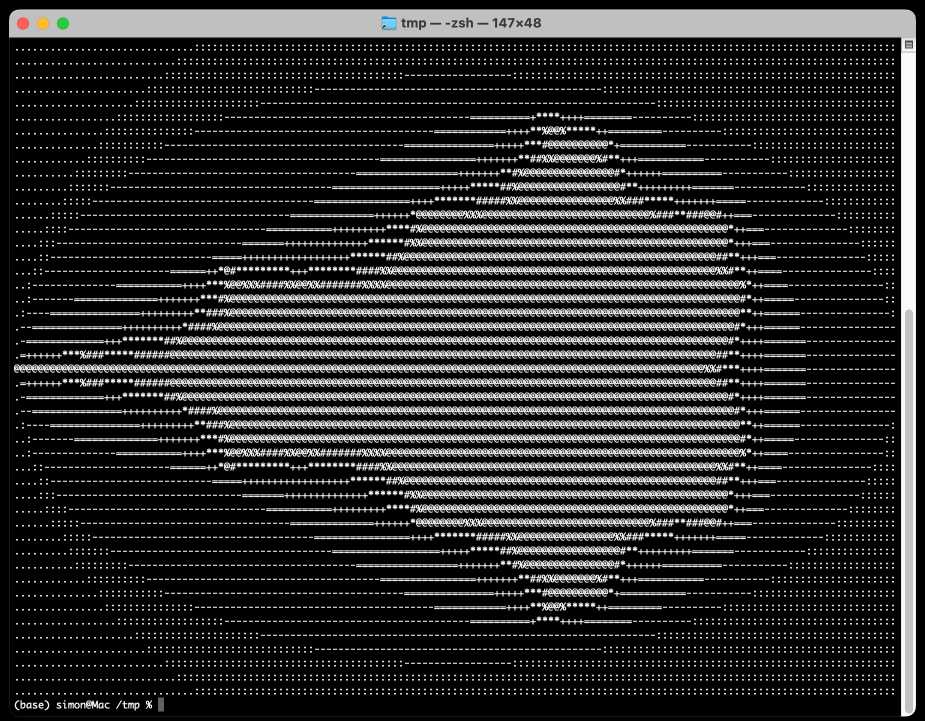15 posts tagged “ai-in-china” and “pelican-riding-a-bicycle”
2025
XBai o4 (via) Yet another open source (Apache 2.0) LLM from a Chinese AI lab. This model card claims:
XBai o4 excels in complex reasoning capabilities and has now completely surpassed OpenAI-o3-mini in Medium mode.
This a 32.8 billion parameter model released by MetaStone AI, a new-to-me lab who released their first model in March - MetaStone-L1-7B, then followed that with MetaStone-S1 1.5B, 7B and 32B in July and now XBai o4 in August.
The MetaStone-S1 models were accompanied with a with a paper, Test-Time Scaling with Reflective Generative Model.
There is very little information available on the English-language web about MetaStone AI. Their paper shows a relationship with USTC, University of Science and Technology of China in Hefei. One of their researchers confirmed on Twitter that their CEO is from KWAI which lead me to this Chinese language article from July last year about Li Yan, formerly of KWAI and now the founder of Wen Xiaobai and evidently now the CEO of MetaStone. www.wenxiaobai.com is listed as the "official website" linked to from the XBai-o4 README on GitHub.
Ivan Fioravanti got it working under MLX in 4bit, 5bit, 6bit, 8bit and 4bit-DWQ sizes. I tried his 6bit one (a 24.81GB download) in LM Studio and had it "Generate an SVG of a pelican riding a bicycle". It thought for 39.49 seconds (thinking trace here) and gave me this:
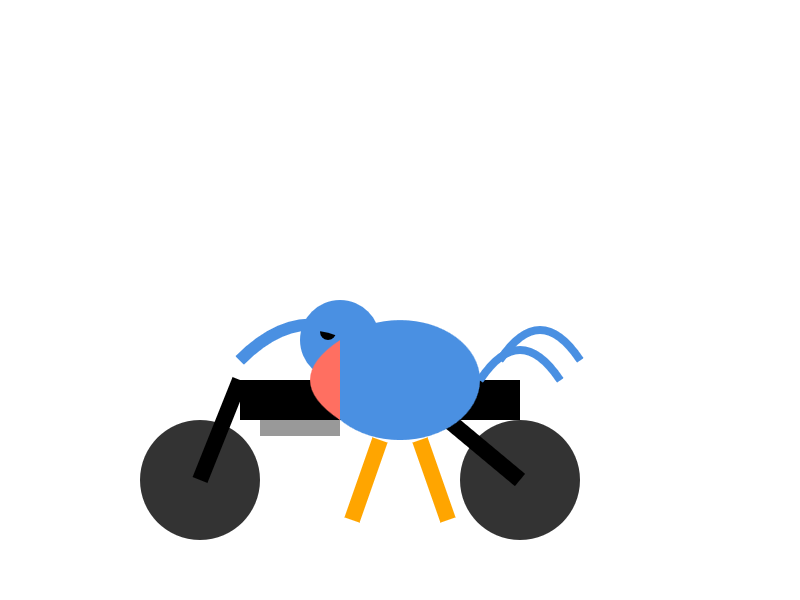
I also had it "Write an HTML and JavaScript page implementing space invaders", which you can try out here. It's not great - the invaders don't fire bullets (it listed that as a "potential improvement") and I don't think it's winnable due to timing issues, but it's an interesting addition to my collection.
LM Studio reported a constant memory usage of 25.54GB and according to Activity Monitor used 87.5% of my GPU and around 39% of a CPU core.
It did a lot of work in the thinking trace - which took 10m35s! - including writing the first draft of much of the code that ended up in the finished result. Here's an extract:
Let me think of variables:
let enemyDirection = 1; // 1 for right, -1 for leftIn the game loop:
enemies.forEach(enemy => {> enemy.x += enemyDirection * enemy.dx;> });Then check if any enemy is out of bounds. If so, reverse direction and move all enemies down.But how to check if any enemy is at the edge?
Maybe find the max x of all enemies and see if it exceeds
canvas.width - enemy.width.Alternatively, track the leftmost and rightmost positions of enemies. Maybe a bit complex.
For simplicity, perhaps check if any enemy's
x + width > canvas.width or x < 0.
Here's the full transcript.
My initial impressions are that I'm not as impressed with this model for running on my own laptop as I was with Qwen3-Coder-30B-A3B-Instruct or GLM-4.5 Air.
But... how extraordinary is it that another Chinese AI lab has been able to produce a competitive model, this time with far less fanfare than we've seen from Qwen and Moonshot AI and Z.ai.
Trying out Qwen3 Coder Flash using LM Studio and Open WebUI and LLM
Qwen just released their sixth model(!) of this July called Qwen3-Coder-30B-A3B-Instruct—listed as Qwen3-Coder-Flash in their chat.qwen.ai interface.
[... 1,390 words]Qwen3-30B-A3B-Thinking-2507 (via) Yesterday was Qwen3-30B-A3B-Instruct-2507. Qwen are clearly committed to their new split between reasoning and non-reasoning models (a reversal from Qwen 3 in April), because today they released the new reasoning partner to yesterday's model: Qwen3-30B-A3B-Thinking-2507.
I'm surprised at how poorly this reasoning mode performs at "Generate an SVG of a pelican riding a bicycle" compared to its non-reasoning partner. The reasoning trace appears to carefully consider each component and how it should be positioned... and then the final result looks like this:
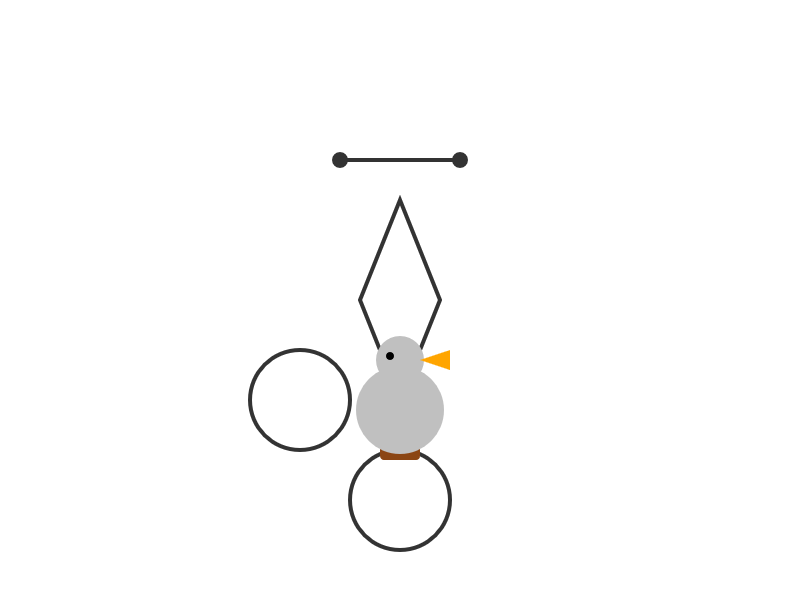
I ran this using chat.qwen.ai/?model=Qwen3-30B-A3B-2507 with the "reasoning" option selected.
I also tried the "Write an HTML and JavaScript page implementing space invaders" prompt I ran against the non-reasoning model. It did a better job in that the game works:
It's not as playable as the on I got from GLM-4.5 Air though - the invaders fire their bullets infrequently enough that the game isn't very challenging.
This model is part of a flurry of releases from Qwen over the past two 9 days. Here's my coverage of each of those:
- Qwen3-235B-A22B-Instruct-2507 - 21st July
- Qwen3-Coder-480B-A35B-Instruct - 22nd July
- Qwen3-235B-A22B-Thinking-2507 - 25th July
- Qwen3-30B-A3B-Instruct-2507 - 29th July
- Qwen3-30B-A3B-Thinking-2507 - today
My 2.5 year old laptop can write Space Invaders in JavaScript now, using GLM-4.5 Air and MLX
I wrote about the new GLM-4.5 model family yesterday—new open weight (MIT licensed) models from Z.ai in China which their benchmarks claim score highly in coding even against models such as Claude Sonnet 4.
[... 685 words]GLM-4.5: Reasoning, Coding, and Agentic Abililties. Another day, another significant new open weight model release from a Chinese frontier AI lab.
This time it's Z.ai - who rebranded (at least in English) from Zhipu AI a few months ago. They just dropped GLM-4.5-Base, GLM-4.5 and GLM-4.5 Air on Hugging Face, all under an MIT license.
These are MoE hybrid reasoning models with thinking and non-thinking modes, similar to Qwen 3. GLM-4.5 is 355 billion total parameters with 32 billion active, GLM-4.5-Air is 106 billion total parameters and 12 billion active.
They started using MIT a few months ago for their GLM-4-0414 models - their older releases used a janky non-open-source custom license.
Z.ai's own benchmarking (across 12 common benchmarks) ranked their GLM-4.5 3rd behind o3 and Grok-4 and just ahead of Claude Opus 4. They ranked GLM-4.5 Air 6th place just ahead of Claude 4 Sonnet. I haven't seen any independent benchmarks yet.
The other models they included in their own benchmarks were o4-mini (high), Gemini 2.5 Pro, Qwen3-235B-Thinking-2507, DeepSeek-R1-0528, Kimi K2, GPT-4.1, DeepSeek-V3-0324. Notably absent: any of Meta's Llama models, or any of Mistral's. Did they deliberately only compare themselves to open weight models from other Chinese AI labs?
Both models have a 128,000 context length and are trained for tool calling, which honestly feels like table stakes for any model released in 2025 at this point.
It's interesting to see them use Claude Code to run their own coding benchmarks:
To assess GLM-4.5's agentic coding capabilities, we utilized Claude Code to evaluate performance against Claude-4-Sonnet, Kimi K2, and Qwen3-Coder across 52 coding tasks spanning frontend development, tool development, data analysis, testing, and algorithm implementation. [...] The empirical results demonstrate that GLM-4.5 achieves a 53.9% win rate against Kimi K2 and exhibits dominant performance over Qwen3-Coder with an 80.8% success rate. While GLM-4.5 shows competitive performance, further optimization opportunities remain when compared to Claude-4-Sonnet.
They published the dataset for that benchmark as zai-org/CC-Bench-trajectories on Hugging Face. I think they're using the word "trajectory" for what I would call a chat transcript.
Unlike DeepSeek-V3 and Kimi K2, we reduce the width (hidden dimension and number of routed experts) of the model while increasing the height (number of layers), as we found that deeper models exhibit better reasoning capacity.
They pre-trained on 15 trillion tokens, then an additional 7 trillion for code and reasoning:
Our base model undergoes several training stages. During pre-training, the model is first trained on 15T tokens of a general pre-training corpus, followed by 7T tokens of a code & reasoning corpus. After pre-training, we introduce additional stages to further enhance the model's performance on key downstream domains.
They also open sourced their post-training reinforcement learning harness, which they've called slime. That's available at THUDM/slime on GitHub - THUDM is the Knowledge Engineer Group @ Tsinghua University, the University from which Zhipu AI spun out as an independent company.
This time I ran my pelican bechmark using the chat.z.ai chat interface, which offers free access (no account required) to both GLM 4.5 and GLM 4.5 Air. I had reasoning enabled for both.
Here's what I got for "Generate an SVG of a pelican riding a bicycle" on GLM 4.5. I like how the pelican has its wings on the handlebars:

And GLM 4.5 Air:

Ivan Fioravanti shared a video of the mlx-community/GLM-4.5-Air-4bit quantized model running on a M4 Mac with 128GB of RAM, and it looks like a very strong contender for a local model that can write useful code. The cheapest 128GB Mac Studio costs around $3,500 right now, so genuinely great open weight coding models are creeping closer to being affordable on consumer machines.
Update: Ivan released a 3 bit quantized version of GLM-4.5 Air which runs using 48GB of RAM on my laptop. I tried it and was really impressed, see My 2.5 year old laptop can write Space Invaders in JavaScript now.
Qwen3-235B-A22B-Thinking-2507 (via) The third Qwen model release week, following Qwen3-235B-A22B-Instruct-2507 on Monday 21st and Qwen3-Coder-480B-A35B-Instruct on Tuesday 22nd.
Those two were both non-reasoning models - a change from the previous models in the Qwen 3 family which combined reasoning and non-reasoning in the same model, controlled by /think and /no_think tokens.
Today's model, Qwen3-235B-A22B-Thinking-2507 (also released as an FP8 variant), is their new thinking variant.
Qwen claim "state-of-the-art results among open-source thinking models" and have increased the context length to 262,144 tokens - a big jump from April's Qwen3-235B-A22B which was "32,768 natively and 131,072 tokens with YaRN".
Their own published benchmarks show comparable scores to DeepSeek-R1-0528, OpenAI's o3 and o4-mini, Gemini 2.5 Pro and Claude Opus 4 in thinking mode.
The new model is already available via OpenRouter.
But how good is its pelican?
I tried it with "Generate an SVG of a pelican riding a bicycle" via OpenRouter, and it thought for 166 seconds - nearly three minutes! I have never seen a model think for that long. No wonder the documentation includes the following:
However, since the model may require longer token sequences for reasoning, we strongly recommend using a context length greater than 131,072 when possible.
Here's a copy of that thinking trace. It was really fun to scan through:
![Qwen3 235B A22B Thinking 2507 Seat at (200,200). The pelican's body will be: - The main body: a rounded shape starting at (200,200) and going to about (250, 250) [but note: the pelican is sitting, so the body might be more upright?] - Head: at (200, 180) [above the seat] and the beak extending forward to (280, 180) or so. We'll design the pelican as: - Head: a circle at (180, 170) with radius 15. - Beak: a long triangle from (180,170) to (250,170) and then down to (250,180) and back? Actually, the beak is a long flat-bottomed triangle.](https://static.simonwillison.net/static/2025/qwen-details.jpg)
The finished pelican? Not so great! I like the beak though:

Qwen3-Coder: Agentic Coding in the World (via) It turns out that as I was typing up my notes on Qwen3-235B-A22B-Instruct-2507 the Qwen team were unleashing something much bigger:
Today, we’re announcing Qwen3-Coder, our most agentic code model to date. Qwen3-Coder is available in multiple sizes, but we’re excited to introduce its most powerful variant first: Qwen3-Coder-480B-A35B-Instruct — a 480B-parameter Mixture-of-Experts model with 35B active parameters which supports the context length of 256K tokens natively and 1M tokens with extrapolation methods, offering exceptional performance in both coding and agentic tasks.
This is another Apache 2.0 licensed open weights model, available as Qwen3-Coder-480B-A35B-Instruct and Qwen3-Coder-480B-A35B-Instruct-FP8 on Hugging Face.
I used qwen3-coder-480b-a35b-instruct on the Hyperbolic playground to run my "Generate an SVG of a pelican riding a bicycle" test prompt:

I actually slightly prefer the one I got from qwen3-235b-a22b-07-25.
It's also available as qwen3-coder on OpenRouter.
In addition to the new model, Qwen released their own take on an agentic terminal coding assistant called qwen-code, which they describe in their blog post as being "Forked from Gemini Code" (they mean gemini-cli) - which is Apache 2.0 so a fork is in keeping with the license.
They focused really hard on code performance for this release, including generating synthetic data tested using 20,000 parallel environments on Alibaba Cloud:
In the post-training phase of Qwen3-Coder, we introduced long-horizon RL (Agent RL) to encourage the model to solve real-world tasks through multi-turn interactions using tools. The key challenge of Agent RL lies in environment scaling. To address this, we built a scalable system capable of running 20,000 independent environments in parallel, leveraging Alibaba Cloud’s infrastructure. The infrastructure provides the necessary feedback for large-scale reinforcement learning and supports evaluation at scale. As a result, Qwen3-Coder achieves state-of-the-art performance among open-source models on SWE-Bench Verified without test-time scaling.
To further burnish their coding credentials, the announcement includes instructions for running their new model using both Claude Code and Cline using custom API base URLs that point to Qwen's own compatibility proxies.
Pricing for Qwen's own hosted models (through Alibaba Cloud) looks competitive. This is the first model I've seen that sets different prices for four different sizes of input:
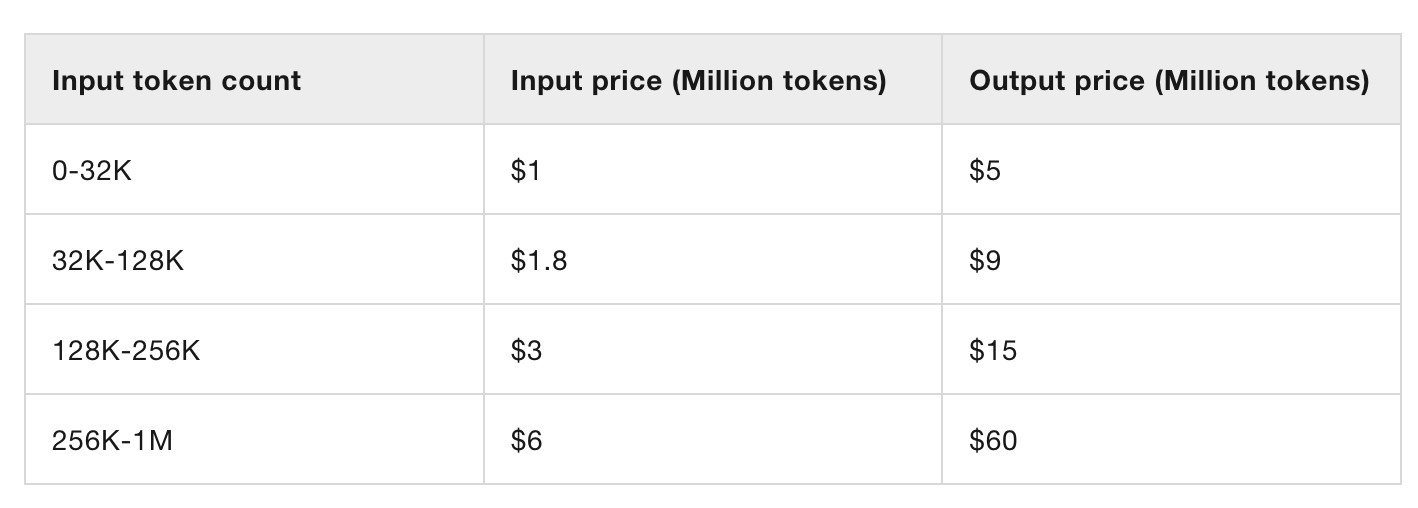
This kind of pricing reflects how inference against longer inputs is more expensive to process. Gemini 2.5 Pro has two different prices for above or below 200,00 tokens.
Awni Hannun reports running a 4-bit quantized MLX version on a 512GB M3 Ultra Mac Studio at 24 tokens/second using 272GB of RAM, getting great results for "write a python script for a bouncing yellow ball within a square, make sure to handle collision detection properly. make the square slowly rotate. implement it in python. make sure ball stays within the square".
Qwen/Qwen3-235B-A22B-Instruct-2507. Significant new model release from Qwen, published yesterday without much fanfare. (Update: probably because they were cooking the much larger Qwen3-Coder-480B-A35B-Instruct which they released just now.)
This is a follow-up to their April release of the full Qwen 3 model family, which included a Qwen3-235B-A22B model which could handle both reasoning and non-reasoning prompts (via a /no_think toggle).
The new Qwen3-235B-A22B-Instruct-2507 ditches that mechanism - this is exclusively a non-reasoning model. It looks like Qwen have new reasoning models in the pipeline.
This new model is Apache 2 licensed and comes in two official sizes: a BF16 model (437.91GB of files on Hugging Face) and an FP8 variant (220.20GB). VentureBeat estimate that the large model needs 88GB of VRAM while the smaller one should run in ~30GB.
The benchmarks on these new models look very promising. Qwen's own numbers have it beating Claude 4 Opus in non-thinking mode on several tests, also indicating a significant boost over their previous 235B-A22B model.
I haven't seen any independent benchmark results yet. Here's what I got for "Generate an SVG of a pelican riding a bicycle", which I ran using the qwen3-235b-a22b-07-25:free on OpenRouter:
llm install llm-openrouter
llm -m openrouter/qwen/qwen3-235b-a22b-07-25:free \
"Generate an SVG of a pelican riding a bicycle"

moonshotai/Kimi-K2-Instruct (via) Colossal new open weights model release today from Moonshot AI, a two year old Chinese AI lab with a name inspired by Pink Floyd’s album The Dark Side of the Moon.
My HuggingFace storage calculator says the repository is 958.52 GB. It's a mixture-of-experts model with "32 billion activated parameters and 1 trillion total parameters", trained using the Muon optimizer as described in Moonshot's joint paper with UCLA Muon is Scalable for LLM Training.
I think this may be the largest ever open weights model? DeepSeek v3 is 671B.
I created an API key for Moonshot, added some dollars and ran a prompt against it using my LLM tool. First I added this to the extra-openai-models.yaml file:
- model_id: kimi-k2
model_name: kimi-k2-0711-preview
api_base: https://api.moonshot.ai/v1
api_key_name: moonshot
Then I set the API key:
llm keys set moonshot
# Paste key here
And ran a prompt:
llm -m kimi-k2 "Generate an SVG of a pelican riding a bicycle" \
-o max_tokens 2000
(The default max tokens setting was too short.)

This is pretty good! The spokes are a nice touch. Full transcript here.
This one is open weights but not open source: they're using a modified MIT license with this non-OSI-compliant section tagged on at the end:
Our only modification part is that, if the Software (or any derivative works thereof) is used for any of your commercial products or services that have more than 100 million monthly active users, or more than 20 million US dollars (or equivalent in other currencies) in monthly revenue, you shall prominently display "Kimi K2" on the user interface of such product or service.
Update: MLX developer Awni Hannun reports:
The new Kimi K2 1T model (4-bit quant) runs on 2 512GB M3 Ultras with mlx-lm and mx.distributed.
1 trillion params, at a speed that's actually quite usable
The last six months in LLMs, illustrated by pelicans on bicycles
I presented an invited keynote at the AI Engineer World’s Fair in San Francisco this week. This is my third time speaking at the event—here are my talks from October 2023 and June 2024. My topic this time was “The last six months in LLMs”—originally planned as the last year, but so much has happened that I had to reduce my scope!
[... 6,077 words]Qwen 3 offers a case study in how to effectively release a model
Alibaba’s Qwen team released the hotly anticipated Qwen 3 model family today. The Qwen models are already some of the best open weight models—Apache 2.0 licensed and with a variety of different capabilities (including vision and audio input/output).
[... 1,462 words]deepseek-ai/DeepSeek-V3-0324.
Chinese AI lab DeepSeek just released the latest version of their enormous DeepSeek v3 model, baking the release date into the name DeepSeek-V3-0324.
The license is MIT (that's new - previous DeepSeek v3 had a custom license), the README is empty and the release adds up a to a total of 641 GB of files, mostly of the form model-00035-of-000163.safetensors.
The model only came out a few hours ago and MLX developer Awni Hannun already has it running at >20 tokens/second on a 512GB M3 Ultra Mac Studio ($9,499 of ostensibly consumer-grade hardware) via mlx-lm and this mlx-community/DeepSeek-V3-0324-4bit 4bit quantization, which reduces the on-disk size to 352 GB.
I think that means if you have that machine you can run it with my llm-mlx plugin like this, but I've not tried myself!
llm mlx download-model mlx-community/DeepSeek-V3-0324-4bit
llm chat -m mlx-community/DeepSeek-V3-0324-4bit
The new model is also listed on OpenRouter. You can try a chat at openrouter.ai/chat?models=deepseek/deepseek-chat-v3-0324:free.
Here's what the chat interface gave me for "Generate an SVG of a pelican riding a bicycle":

I have two API keys with OpenRouter - one of them worked with the model, the other gave me a No endpoints found matching your data policy error - I think because I had a setting on that key disallowing models from training on my activity. The key that worked was a free key with no attached billing credentials.
For my working API key the llm-openrouter plugin let me run a prompt like this:
llm install llm-openrouter
llm keys set openrouter
# Paste key here
llm -m openrouter/deepseek/deepseek-chat-v3-0324:free "best fact about a pelican"
Here's that "best fact" - the terminal output included Markdown and an emoji combo, here that's rendered.
One of the most fascinating facts about pelicans is their unique throat pouch, called a gular sac, which can hold up to 3 gallons (11 liters) of water—three times more than their stomach!
Here’s why it’s amazing:
- Fishing Tool: They use it like a net to scoop up fish, then drain the water before swallowing.
- Cooling Mechanism: On hot days, pelicans flutter the pouch to stay cool by evaporating water.
- Built-in "Shopping Cart": Some species even use it to carry food back to their chicks.Bonus fact: Pelicans often fish cooperatively, herding fish into shallow water for an easy catch.
Would you like more cool pelican facts? 🐦🌊
In putting this post together I got Claude to build me this new tool for finding the total on-disk size of a Hugging Face repository, which is available in their API but not currently displayed on their website.
Update: Here's a notable independent benchmark from Paul Gauthier:
DeepSeek's new V3 scored 55% on aider's polyglot benchmark, significantly improving over the prior version. It's the #2 non-thinking/reasoning model, behind only Sonnet 3.7. V3 is competitive with thinking models like R1 & o3-mini.
DeepSeek-R1 and exploring DeepSeek-R1-Distill-Llama-8B
DeepSeek are the Chinese AI lab who dropped the best currently available open weights LLM on Christmas day, DeepSeek v3. That model was trained in part using their unreleased R1 “reasoning” model. Today they’ve released R1 itself, along with a whole family of new models derived from that base.
[... 1,276 words]2024
QwQ: Reflect Deeply on the Boundaries of the Unknown. Brand new openly licensed (Apache 2) model from Alibaba Cloud's Qwen team, this time clearly inspired by OpenAI's work on reasoning in o1.
I love the flowery language they use to introduce the new model:
Through deep exploration and countless trials, we discovered something profound: when given time to ponder, to question, and to reflect, the model’s understanding of mathematics and programming blossoms like a flower opening to the sun. Just as a student grows wiser by carefully examining their work and learning from mistakes, our model achieves deeper insight through patient, thoughtful analysis.
It's already available through Ollama as a 20GB download. I initially ran it like this:
ollama run qwq
This downloaded the model and started an interactive chat session. I tried the classic "how many rs in strawberry?" and got this lengthy but correct answer, which concluded:
Wait, but maybe I miscounted. Let's list them: 1. s 2. t 3. r 4. a 5. w 6. b 7. e 8. r 9. r 10. y Yes, definitely three "r"s. So, the word "strawberry" contains three "r"s.
Then I switched to using LLM and the llm-ollama plugin. I tried prompting it for Python that imports CSV into SQLite:
Write a Python function import_csv(conn, url, table_name) which acceopts a connection to a SQLite databse and a URL to a CSV file and the name of a table - it then creates that table with the right columns and imports the CSV data from that URL
It thought through the different steps in detail and produced some decent looking code.
Finally, I tried this:
llm -m qwq 'Generate an SVG of a pelican riding a bicycle'
For some reason it answered in Simplified Chinese. It opened with this:
生成一个SVG图像,内容是一只鹈鹕骑着一辆自行车。这听起来挺有趣的!我需要先了解一下什么是SVG,以及如何创建这样的图像。
Which translates (using Google Translate) to:
Generate an SVG image of a pelican riding a bicycle. This sounds interesting! I need to first understand what SVG is and how to create an image like this.
It then produced a lengthy essay discussing the many aspects that go into constructing a pelican on a bicycle - full transcript here. After a full 227 seconds of constant output it produced this as the final result.
I think that's pretty good!
Qwen2.5-Coder-32B is an LLM that can code well that runs on my Mac
There’s a whole lot of buzz around the new Qwen2.5-Coder Series of open source (Apache 2.0 licensed) LLM releases from Alibaba’s Qwen research team. On first impression it looks like the buzz is well deserved.
[... 697 words]